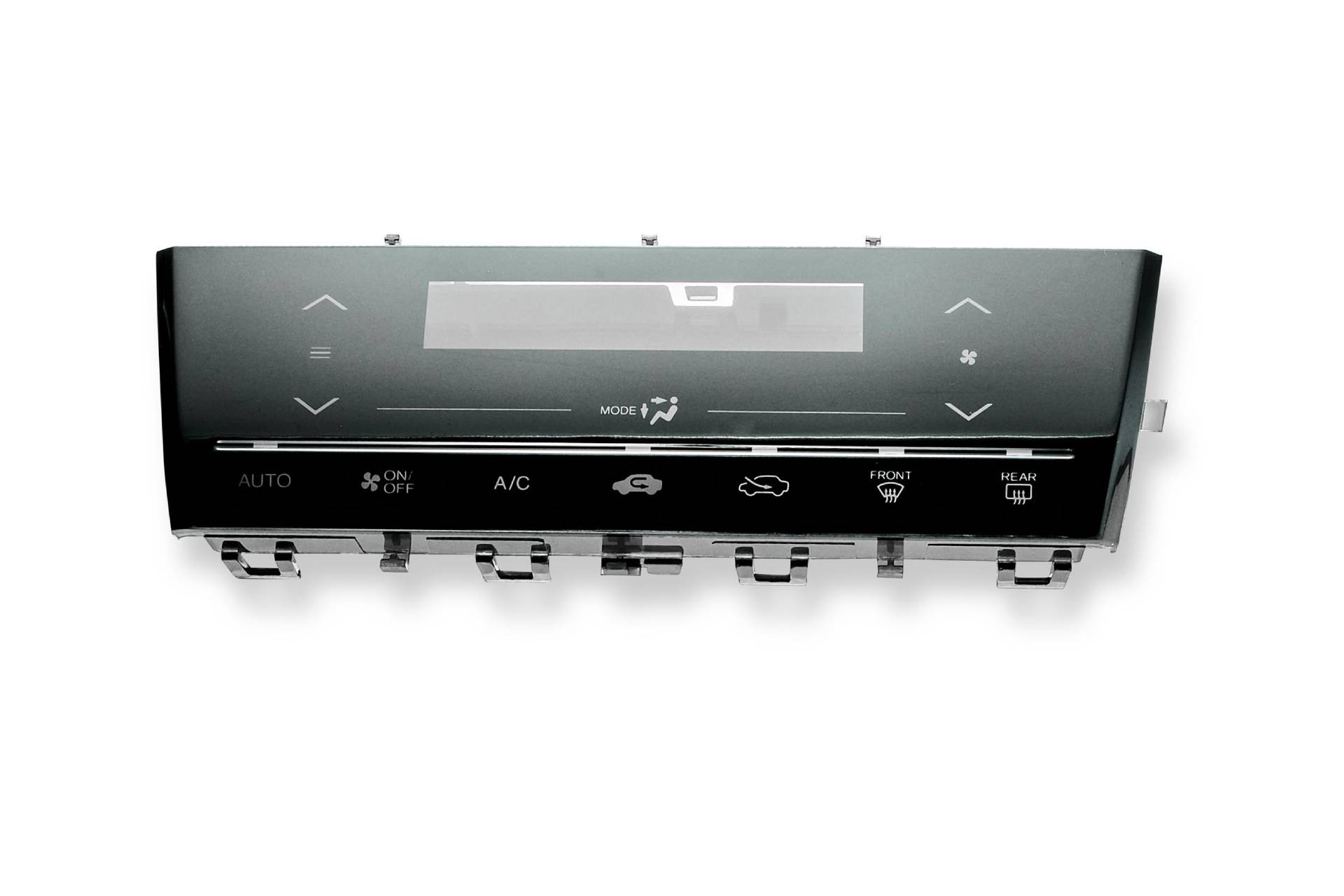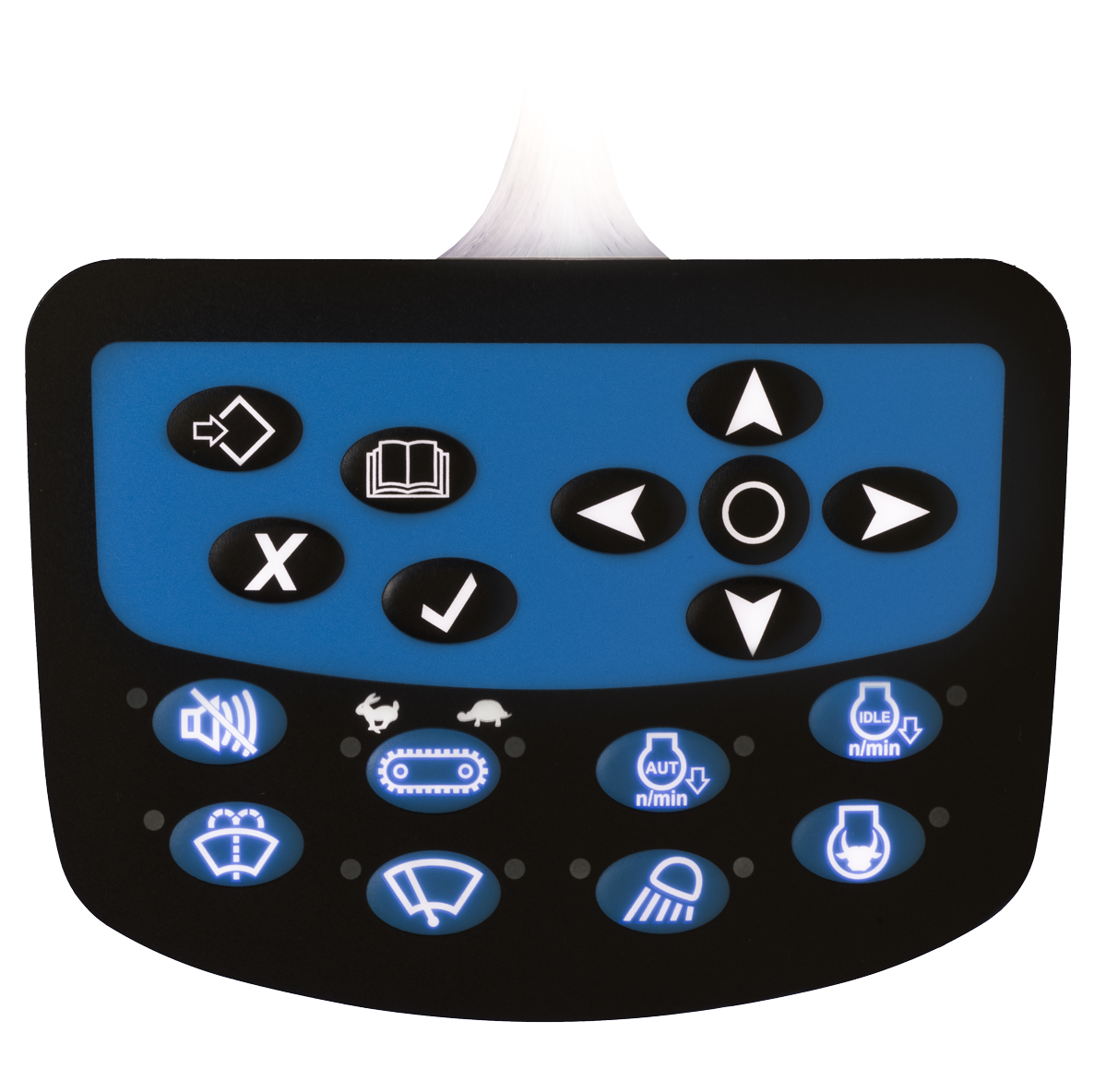Everything About Membrane Switch Over: Comprehending Its Design and Functionality
When you think about the control interfaces in modern gadgets, membrane switches commonly come to mind. These elements are a lot more than just buttons; they mix layout and functionality perfectly. Understanding how they work and what makes them efficient can alter your viewpoint on day-to-day electronic devices. However, there are nuances to their style and efficiency that you may not recognize. Allow's explore what collections membrane switches apart from other control systems.
What Are Membrane Layer Switches?

Membrane switches can also be customized concerning shape, size, and graphics, permitting suppliers to create special interfaces customized to details products. Overall, membrane buttons play a substantial duty in improving individual experience across a broad variety of applications.
Exactly How Membrane Switches Over Job
When you press a key on a membrane switch, it turns on an uncomplicated yet reliable device. The top layer, commonly made from adaptable product, lowers onto a conductive layer underneath it. This activity bridges the void between conductive traces, completing an electrical circuit. As quickly as the circuit closes, it sends a signal to the tool's controller, which translates your input.
You'll discover that the tactile responses varies based upon the button design, supplying either a soft click or a much more pronounced feedback. When you launch the trick, the membrane layer returns to its original position, resuming the circuit and stopping the signal. This procedure takes place nearly instantly, making certain a responsive individual experience.
Membrane buttons are preferred due to their durability and resistance to dust and moisture, making them ideal for various applications, from family home appliances to medical gadgets. Recognizing this procedure aids you value their prevalent use.
Secret Components of Membrane Switches
Recognizing the vital parts of membrane buttons is fundamental for realizing their functionality and style. At the core, you'll locate the visuals overlay, which supplies the aesthetic user interface for users. Below that, there's a spacer layer that divides the circuit layers, ensuring that they don't make call until pressed. The circuit layer is where the magic takes place; it includes conductive traces that complete the circuit when you press the switch. One more essential aspect is the adhesive backing, permitting the button to comply with surfaces firmly. The protective layer guards against ecological factors and use, prolonging the button's life-span. Each component plays a substantial function in ensuring reliable performance and customer interaction. By recognizing these elements, you'll gain understanding right into exactly how membrane layer switches run and their relevance in numerous applications.
Products Utilized in Membrane Switch Design
The efficiency and resilience of membrane switches over greatly depend upon the materials made use of in their design. You usually encounter polyester and polycarbonate as main substratums as a result of their exceptional strength and versatility. These materials withstand scrapes and chemicals, making them suitable for demanding atmospheres.
The conductive layers frequently make use of silver or carbon, picked for their reliability and conductivity. membrane switch manufacturer. Silver supplies superior performance, while carbon is a cost-efficient choice. For the overlay, you may take into consideration a matte or shiny finish, relying on your aesthetic requirements and customer experience
Make particular to select adhesives that stand up to environmental elements like temperature and humidity. Picking the appropriate my review here products will certainly ensure your membrane switch stands the examination of time.
Style Considerations for Membrane Buttons
While making membrane layer buttons, it's important to take into account various factors that affect their capability and individual experience. Start by focusing on the format and button size; ensure they're instinctive and simple to navigate. Take into consideration the responsive comments you wish to give-- will individuals require an obvious click or a softer touch? Additionally, think of the materials you'll make use of, as they'll affect toughness and aesthetics.
Don't ignore the graphic design; clear labeling and color comparison are significant for exposure. Confirm your design accommodates environmental elements, like dampness or temperature level variations, which might influence performance. Lastly, remember the value of screening models with real users to gather comments and make essential modifications. This repetitive procedure aids you refine the design, confirming it satisfies both practical and aesthetic requirements properly. By carefully considering these components, you'll produce a membrane switch that enhances usability and complete satisfaction.
Applications of Membrane Layer Switches
Membrane layer buttons are flexible components located in numerous applications, from commercial tools to customer electronics. You'll see their influence in devices that call for sturdy user interfaces and in gadgets that gain from smooth layouts. Recognizing these applications helps you value the performance and practicality of membrane layer switches internet in day-to-day technology.
Industrial Devices Use
When you're looking to improve the performance of industrial devices, membrane buttons offer a reputable service that combines sturdiness with user-friendly style. These buttons are ideal for extreme settings, providing resistance to dust, moisture, and chemicals. Welcome membrane switches to improve your operations and enhance general performance.
Consumer Electronics Combination
In the domain of consumer electronic devices, membrane layer buttons play a crucial duty in enhancing user communication and tool capability. You'll discover them in tools like microwaves, push-button controls, and pc gaming consoles, giving a smooth method to connect with innovation. Their sleek design permits easy assimilation right into numerous items, making controls user-friendly and easy to use. With their ability to incorporate graphics and backlighting, you can delight in a modern visual that enhances the gadget's general look. Membrane layer buttons additionally assure toughness and resistance to dust and moisture, expanding the life-span of your electronics. By selecting membrane buttons, you enhance not simply the performance but additionally the style of your devices, making everyday communications smooth and satisfying.
Advantages and Negative Aspects of Membrane Layer Switches
While membrane layer buttons supply a range of benefits, they likewise come with some disadvantages that you must take into consideration. One substantial advantage is their portable style, making them ideal for space-constrained applications.

Nevertheless, there are negative aspects. Membrane buttons can have a much shorter life expectancy contrasted to mechanical switches, especially under heavy usage. They can also be less responsive, which may impact customer feedback throughout operation. If harmed, fixing them can be challenging and frequently requires full substitute. Ultimately, their sensitivity to severe temperature levels and environmental problems may limit their performance in specific settings. Stabilizing these pros and disadvantages will help you establish if membrane layer buttons are the appropriate suitable for your job.
Frequently Asked Concerns
How Much Time Do Membrane Changes Typically Last?
Membrane layer changes normally last in between 5 to ten years, relying on usage and environmental conditions. You'll wish to evaluate factors like wear, direct exposure to dampness, and temperature changes to gauge their long life effectively.
Can Membrane Switches Be Custom-made for Specific Styles?
Yes, you can customize membrane buttons to fit particular designs (membrane switch manufacturer). You'll have the freedom to pick colors, shapes, and layouts that match your task's needs, ensuring they mix effortlessly with your overall aesthetic
What Is the Cost Array for Membrane Switch Over Manufacturing?
The cost array for membrane layer button production normally drops between $1 and $10 each, depending on variables like style complexity, quantity, and materials. You can get quotes from suppliers to discover the ideal alternative.

Are Membrane Layer Switches Water Resistant or Resistant?
Membrane buttons can be developed to be water resistant or immune, depending upon materials utilized and building and construction approaches. If you need them for damp atmospheres, guarantee you specify those needs during the design process.
Just How Do Membrane Switches Compare to Traditional Buttons?
Membrane buttons are normally thinner and a lot more adaptable than typical buttons, offering a sleek style. They're frequently simpler to cleanse and integrate, but may not supply the responsive responses you're used to with mechanical options.
Verdict
